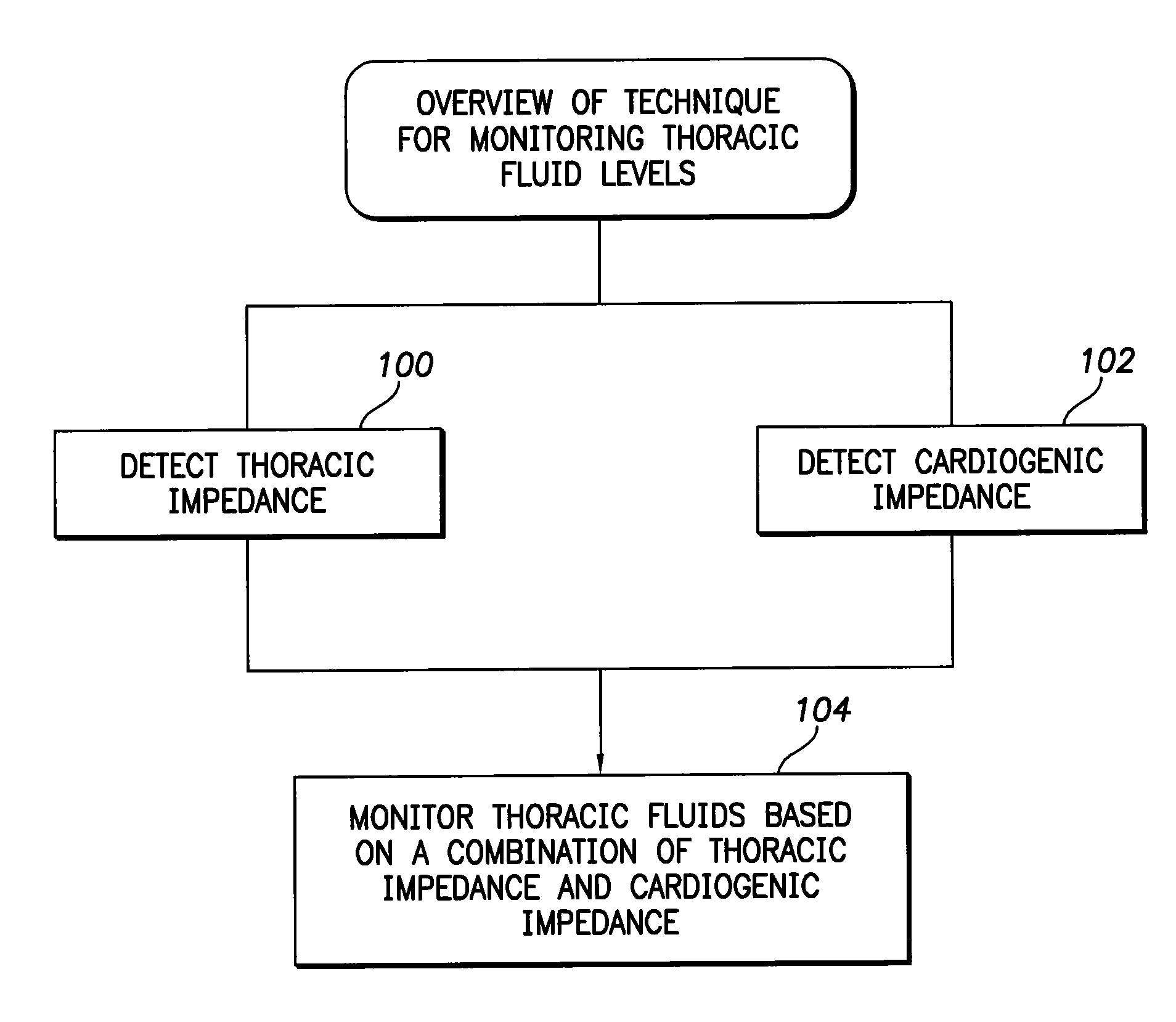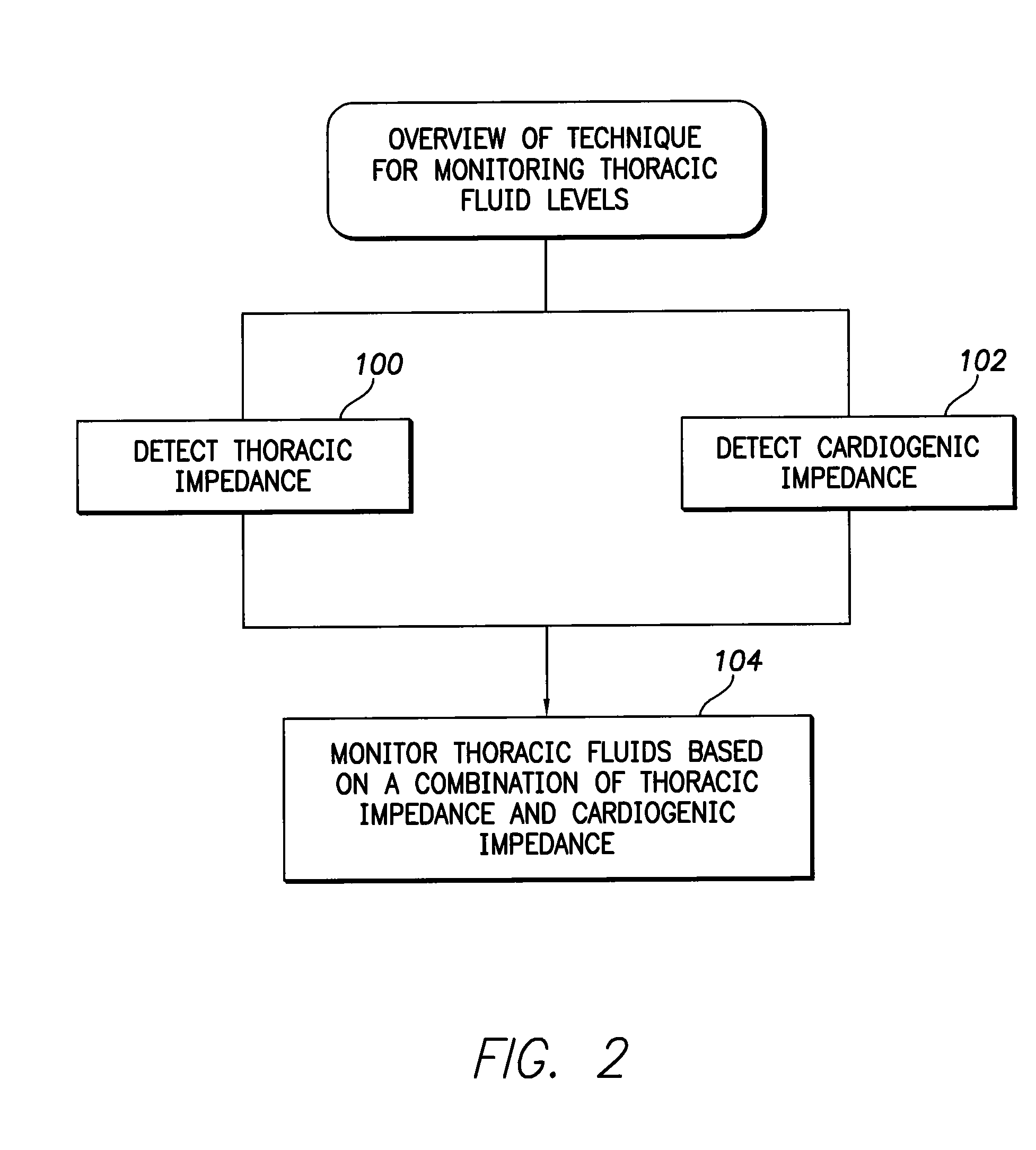System and method for monitoring thoracic fluid levels based on impedance using an implantable medical device
a technology of impedance and thoracic fluid, which is applied in the field of implantable medical devices, can solve the problems of insufficient ejection or filling of blood in the ventricle, loss of propulsive power of the heart, and impairment of arterial circulation, so as to prevent unnecessary false positive diuresis and excessive diuresis
- Summary
- Abstract
- Description
- Claims
- Application Information
AI Technical Summary
Benefits of technology
Problems solved by technology
Method used
Image
Examples
Embodiment Construction
[0023]The following description includes the best mode presently contemplated for practicing the invention. This description is not to be taken in a limiting sense but is made merely to describe general principles of the invention. The scope of the invention should be ascertained with reference to the issued claims. In the description of the invention that follows, like numerals or reference designators will be used to refer to like parts or elements throughout.
Overview of Implantable System
[0024]FIG. 1 illustrates an implantable medical system 8 capable of monitoring thoracic fluid levels using both cardiogenic impedance and thoracic impedance. The system is further capable of titrating dosages of diuretics to maintain thoracic fluid levels within optimal or preferred ranges. To these ends, medical system 8 includes a pacer / ICD 10 or other cardiac rhythm management device capable of applying impedance detection pulses to patient thoracic tissues (including heart tissues) via one or...
PUM
 Login to View More
Login to View More Abstract
Description
Claims
Application Information
 Login to View More
Login to View More - R&D
- Intellectual Property
- Life Sciences
- Materials
- Tech Scout
- Unparalleled Data Quality
- Higher Quality Content
- 60% Fewer Hallucinations
Browse by: Latest US Patents, China's latest patents, Technical Efficacy Thesaurus, Application Domain, Technology Topic, Popular Technical Reports.
© 2025 PatSnap. All rights reserved.Legal|Privacy policy|Modern Slavery Act Transparency Statement|Sitemap|About US| Contact US: help@patsnap.com



